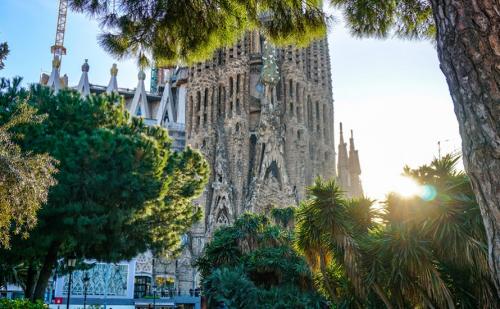Antoni Gaudi and Sagrada Familia

It’s virtually impossible to visit Barcelona without coming across not one but several architectural creations of Antoni Gaudi. His grasp of design and architecture was rather eccentric back then and, let’s face it, it remains eccentric today. You either love it or hate it. However, there is a genius in his eccentricity, a genius that goes beyond flashy colors and psychedelic patterns. So, your feelings aside, Gaudi’s works should be on top of your list of places to see in Barcelona.
The Roots of Gaudi’s Modernism
Although, at first sight, Gaudi’s buildings can seem a bit chaotic without measure, there is a rational reason behind every curve, ripple, and angle. To understand his buildings are all about, we need to go back to the beginning.
Gaudi (born June 25, 1852) was a son of coppersmith of humble origins. Nonetheless, he showed an aptitude for and interest in architecture at a very early age. Hence, when he was old enough, he left to study to Barcelona, the intellectual hub of Catalonia.
His fascination with nature was there from the
beginning but it took a while before his style evolved to its final form. When
he graduated from Provincial School of Architecture, his early creations were a
bit more floral version of the typical Victorian architecture. Yet, as his
career progress, Gaudi turned to nature for inspiration more and more. One of
his most famous quotes claims “...Originality
consists of going back to the origins.”
Gaudi & Nature
His obsession with natural shape is the reason why his work was so ahead of his time. He observed the natural structural forms and applied their rules and laws to man-made constructions. For instance, he used colors, textures, and natural predispositions of raw materials to create designs which did not just feel natural in relation to nature but also human body. But what does all this mean in practice?
For instance, he created a completely new “equilibrated structure,” that is, a structure that could keep upright on its own without internal or external support. He used this system to construct two of Barcelona’s main Gaudí attraction, Casa Batlló (1904–06) and Casa Milà (1905–10). In addition, both of these noble homes feature a unique ventilation system (also completely inspired by nature) which would make today’s air conditioning unnecessary. In Casa Batllo, besides the mighty “dragon” on the roof, you can also observe how Gaudi used darker and lighter colors of the tiles and sizes and angles of the windows to distribute the natural light evenly through all rooms of the house.
Gaudi’s Ultimate Creation
However, Gaudi’s most significant architectural achievement and life work is the still-unfinished Basilica of Sagrada Familia adorning Barcelona’s skyline.
Some people find the church a bit too much. Well, it’s obvious Gaudi unleashed all his creative powers on the project. However, every single element incorporated into the structure has its meaning and purpose. The apparent chaos is a carefully orchestrated symfony. Besides the opulent religious symbolism, the church is an embodiment of the laws of nature.
For instance, the tall walls of Sagrada Familia stand without any support. It’s walls hold each other in perfect natural compression. How did Gaudi do it? He created a "hanging chain" model of the church from weights on strings. In a scale of 1:10 he traced the outline of the church on a wooden board, attached it to the ceiling and hung strings from the points where he wanted to place the columns. He then hung small sacs of wight (ten-thousandth part of the actual weight the arches would have to carry) weighing them on the naturally formed arches. He photographed the model and calculated the natural, gravity-modeled angle of each column and arch. Time consuming but absolutely genius!
What Now?
This is what Gaudi is all about. He was an eccentric genius way ahead of his time. His designs were so smart that they make you wonder, why we don’t use his natural ventilation or lighting systems in the often dark and stuffy modern buildings of today...
So, when you make your way through Barcelona’s tourist attractions, give Gaudi a chance to prove his point. Every time you see a color, texture, shape, or angle... don’t just acknowledge its existence but ask why is it there?
Post Your Ad Here
Comments